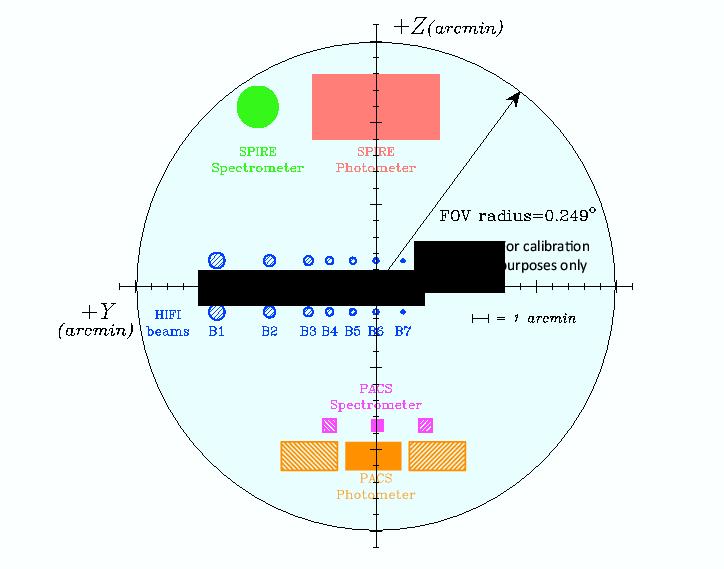Table of Contents
Herschel is a versatile observatory with a wide range of capabilities that cover point-source photometry, imaging, large area mapping and spectroscopy at both intermediate and high resolution. Despite the relatively small size of far-IR detectors compared to their visible and near-IR equivalents, it can map large areas of sky efficiently to faint limits. The telescope was designed to give diffraction-limited images - resolution 6 arcseconds - at 90 microns but, in space, it actually performs significantly better than this, with diffraction-limited images being seen as short as 70 microns, with a FWHM of 5.5 arcseconds at this wavelength.
![[Note]](../../admonitions/note.gif) | Note |
|---|---|
| In mapping mode, at fast scan speeds there is, as is logical, some degradation of the PSF. |
The Herschel Space Observatory covers the wavelength range from 55 - 672 microns. This corresponds to the maximum of emission for black bodies in the range from 5-50K approximately. Hence Herschel is be best suited to observing icy outer solar system objects and cool and cold dust in the universe, both in the rest frame and redshifted. A prime objective has been to study the formation of galaxies in the early universe, as cool dust is an excellent tracer of star formation. The Herschel range is also the one at which cool and cold gases emit their strongest lines, meaning that Herschel is also a superb laboratory for examining the chemistry of planetary atmospheres and of the interstellar medium.
![[Note]](../../admonitions/note.gif) | Note |
|---|---|
| The short wavelength cut-off for Herschel is a matter of definition. For PACS the detector sensitivity below 55 microns is too low to be of practical use and so this value is given as a limit here. |
The Herschel Focal Plane is shown in Figure 3.1. The different instrument arrays and apertures are labelled. The full, unvignetted field of view is approximately half a degree.
